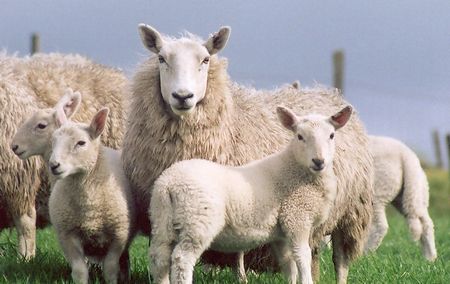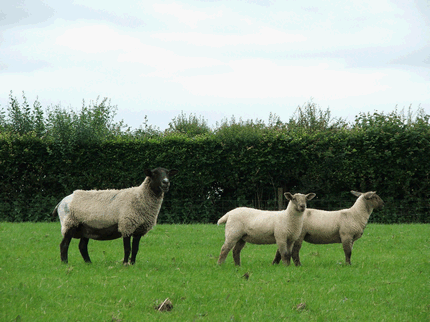Local appeal keeps Downs on top

Minimising your exposure to the fluctuations of the market while securing a better price for your produce must be every farmer’s dream. And for an increasing band of sheep producers farming in the boundaries of the proposed South Downs National Park this is exactly the position they have engineered.
In 2003 South Downs Marketing (SDM) was established after a feasibility study considered the viability of a farmer-led consortium marketing lamb produced from native breeds unique to the South Downs of southern England.
Since then the group has expanded steadily from a handful of members supplying 500 lambs, to a network of 18 producers contributing more than 16,000 lambs.
Over this period the number of outlets has expanded in line with an increasing supply in 2007 SDM supplied 45 butchers across East Sussex, Hampshire and Surrey.
To differentiate the product, the group focuses on promoting its unique attributes: Lamb, sired by Southdown or Hampshire Down breeds that is produced, finished and slaughtered within the confines of the proposed national park.
The scheme is not just about improving the financial returns of members, but enhancing the biodiversity of the South Downs through sustainable farming practices, something managing director Chris Clark is keen to emphasise.

“The initiative is part of a wider programme intent on raising the profitability of sheep production on the South Downs. By increasing sheep numbers on the downs we will improve biodiversity and improve returns,” he says.
The problems created by the recent outbreak of foot-and-mouth disease in the region have affected the group, but only to a minimal extent: Prices have fallen from £2.65/kg deadweight to £2.55/kg.
Before the summer’s disastrous events, producers were in line to receive a premium of £5-7 a lamb, but the collapse in prices means the margin is now significantly more.
“In this climate, when the sheep market is in freefall, we’re only trading at 10p/kg less than the price we agreed [with our butchers].
“Demand dropped 15% because of foot-and-mouth. This was not a consequence of reduced public demand, but a result of export restrictions flooding the domestic market,” explains Mr Clark.
Butchers remained loyal, but because the group depends on other outlets to move the fore-quarter, the overall price fell.
The group has encountered new challenges as it has expanded, primarily associated with delivering produce of a consistent quality at a constant rate throughout the season. “Bringing the supply chain together has been the real challenge. We’ve been a victim of our own success we can’t bring the supply chain with us fast enough.”
The group has introduced a programme of staggered lambing times to allow it to meet early demand and deliver a steady supply throughout the season. But the need to improve the level of understanding between farmers and butchers has led to other initiatives being introduced.

According to Mr Clark, it generally takes about six weeks to gain the confidence of a butcher. “One of the best ideas we’ve ever had was to have a breakfast meeting on farm between butchers and farmers.”
One member, Jon Giffin, livestock manager for Leconfield Farms, says the co-operative had ensured the viability of the farm’s sheep enterprise. This year the estate sold 1200 lambs at an average price of £51 a head.
His system ensures a carcass of 17-21kg deadweight at about 10-12 weeks of age. “We’ve bought in new genetics in the form of a quality Southdown ram from France. It’s given us a visibly superior lamb with better conformation and improved growth rates.”
The company plans to expand lamb production to about 20,000 a year and has started investigating the market for beef produced under the same criteria.
“We’re entirely customer-led and our butchers are asking for beef from local breeds produced and finished under the same system as the lamb,” adds Mr Clark.
“We need to maintain our point of differentiation. We’ve already seen off one competitor who thought he could steal our market simply by undercutting us.
“Things have moved on, customers want local food, produced to an environmentally sustainable standard with a good story to back it up.”
